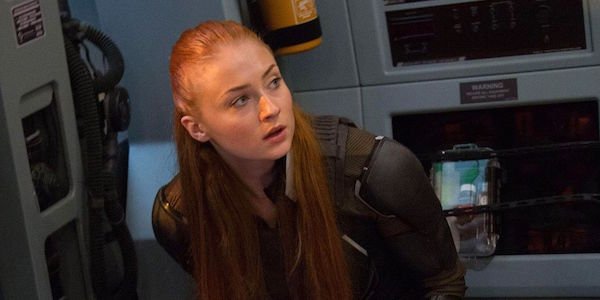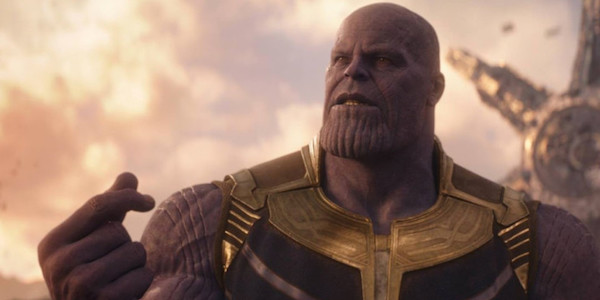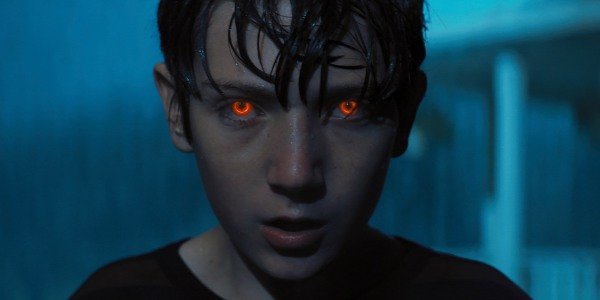A Marvel Movies Timeline To Watch From Beginning To Endgame

Growing since 2008, the Marvel Cinematic Universe has established itself as one of the great blockbuster feats of all time – doing more than any franchise ever to establish a big screen continuity unlike anything audiences have ever seen. Mixing both period and contemporary stories, the movies have allowed fans to have a fascinating perspective on the history of the fictional world, with each new release adding a bit more to the larger picture. Of course, after more than 20 films things have gotten pretty damn complex, so for those of you who get a bit lost in it all we’ve specially designed this feature.
There are basically two ways to enjoy the timeline of the Marvel Cinematic Universe, and we will take a look at both in this piece. The first approach is to watch all of the titles in the order in which they were released in theaters, a.k.a. Release Order; while the second is to take in all of the stories based on the times they are respectively set, a.k.a. Chronological Order. Read about both below, and you can choose the methodology that best suits you in the run up to Avengers: Endgame this summer.
Iron Man (2008)
The Incredible Hulk (2008)
Iron Man 2 (2010)
Thor (2011)
Captain America: The First Avenger (2011)
The Avengers (2012)
Iron Man 3 (2013)
Thor: The Dark World (2013)
Captain America: The Winter Soldier (2014)
Guardians Of The Galaxy (2014)
Avengers: Age Of Ultron (2015)
Ant-Man (2015)
Captain America: Civil War (2016)
Doctor Strange (2016)
Guardians Of The Galaxy Vol. 2 (2017)
Spider-Man: Homecoming (2017)
Thor: Ragnarok (2017)
Black Panther (2018)
Avengers: Infinity War (2018)
Ant-Man And The Wasp (2018)
Captain Marvel (2019)
Avengers: Endgame (2019)
In the establishment of the Marvel Cinematic Universe, Marvel Studios made specific choices regarding what characters they wanted to introduce to audiences and when, and if this is the part of their specific creative process that you personally take into consideration when watching the movies, then Release Order is probably the best choice for you. It’s not only the logical and most straightforward way to go about things, but it’s also likely the order in which most audiences have already seen the films anyway (for obvious reasons).
What we’re looking at here, however, is more than 40 hours of entertainment, and not everybody has that kind of time to spend rewatching movies. The good news is that not every single film is absolutely necessary viewing in the run up to the end of Phase 3, and taking certain shortcuts could save you some time without hampering any of your comprehension.
Take, for starters, the year that kicked the whole thing off: 2008. The first movie of the Marvel Cinematic Universe, Jon Favreau’s Iron Man, is truly necessary viewing to understand the full breadth of this franchise, given that it introduces/establishes arguably the most important character (Robert Downey Jr.’s Tony Stark); some of the most important supporting players (such as Samuel L. Jackson’s Nick Fury, Clark Gregg’s Phil Coulson, and Gwyneth Paltrow’s Pepper Potts); the world’s advanced technologies/science-fiction rules; and the larger tonal approach to the material. You don’t really have full context for the MCU until you watch Iron Man.
Louis Leterrier’s The Incredible Hulk, on the other hand, is a different story. While it’s true that the film does exist within the continuity, and Bruce Banner/Hulk remains a massively important character in the franchise, the reality is that Marvel Studios’ second film isn’t exactly key within the larger legacy. Not only is the story very insular and self-contained – ultimately introducing only two characters who would return in later movies – its main star isn’t actually a part of the Marvel family anymore. Edward Norton was replaced by Mark Ruffalo going into the making of Joss Whedon’s The Avengers, and that blockbuster by itself does a fine job establishing the hero/monster (more on that particular title in a bit).
Jon Favreau’s Iron Man 2 is another film that isn’t absolutely vital to the construction of the MCU, beyond further establishing the key characters mentioned earlier (and introducing Scarlett Johansson’s Black Widow), but Kenneth Branagh’s Thor and Joe Johnston’s Captain America: The First Avenger are two titles that should be rewatched. Origin stories are important in understanding where a hero is coming from, and that is very much true in watching the physical transformation of Chris Evans’ Steve Rogers, and the emotional maturity of Chris Hemsworth’s Thor. It’s also worth noting that both films bring major narrative elements to the franchise as well, with the former giving audiences a taste of the universe beyond Earth, and the latter introducing the Tesseract a.k.a. the Space Stone.
Circling back to The Avengers, it should probably go without saying that the team-up movies are absolutely vital viewing in reflection on the Marvel Cinematic Universe, and this includes Whedon’s Avengers: Age Of Ultron as well. It takes massive world-changing events to bring all of these disparate heroes together – ones that fans should witness and understand to get a full grasp on the big picture – and the blockbusters also expose the nature of relationships key to the future. Some of this is cute stuff like the history between Black Widow and Jeremy Renner’s Hawkeye, and the budding romance between Elizabeth Olsen’s Scarlet Witch and Paul Bettany’s Vision, but it’s also massively important stuff like the serious friction between Iron Man and Captain America.
Moving into Phase 2 there is once again a mix of must-sees and skippables – with the 2013 features falling into the latter category. Shane Black’s Iron Man 3 is certainly fascinating from a character perspective, as it shows how Tony Stark has seriously changed following a full-scale alien invasion, but it’s also very much its own thing and doesn’t leave too many threads hanging. Alan Taylor’s Thor: The Dark World is a bit of a different situation, as it is the film that brings the second Infinity Stone – the Aether a.k.a. The Reality Stone – into the mix, but the overall story doesn’t really provide anything to the larger story unfolding in the MCU, so it’s one of the titles you can probably relive just by reading a plot recap.
Joe and Anthony Russo’s Captain America: The Winter Soldier is a film that is a bit on the fence in this conversation, as it very much is at its heart mostly a Captain America story, but there is enough significance that I would argue that it should be a part of any Marvel Cinematic Universe catch-up. It may not play around with Infinity Stones, but the developments with Black Widow, Sebastian Stan’s Winter Solider, and Anthony Mackie’s Falcon are definitely important to understand, and there is a pretty damn big happening that goes down in the form of S.H.I.E.L.D. being totally destroyed. Plus, it also happens to be one of the best MCU films to date.
Leaving Earth behind, James Gunn’s Guardians Of The Galaxy films then came along to add another key piece to the larger comic book movie universe, but in looking back on everything fans can probably get away with only watching the first one and not Guardians Of The Galaxy Vol. 2. While the 2014 release gives us our first adventure with the titular team, brings the very important Power Stone into the mix, and gives us our first real look at Josh Brolin’s Thanos, the sequel is definitely more about advancing the core ensemble and telling a specific story with those characters.
Peyton Reed’s Ant-Man and Scott Derrickson’s Doctor Strange then return us to the origin story conversation, and it’s the same situation with the titles mentioned before. Both films not only do a great job giving us a sense of exactly who the heroes are and what they fight for, but also add to the larger understanding of the fantastical elements of the universe – specifically with shrinking powers, alternate universes, and the legitimate existence of magic.
Much like The Avengers films, the fact that Joe and Anthony Russo’s Captain America: Civil War features as many heroes and big world events as it does is why it needs to be a part of any Marvel Cinematic Universe recap. Even more so than Avengers: Age Of Ultron, this is the title that advanced character relationships to where they needed to be in the run-up to the Russos’ Avengers: Infinity War, and the emotional changes that they go through are necessary to understand where they are mentally going into the ordeal that winds up changing life as they know it.
Obviously Avengers: Infinity War is the big daddy that absolutely must be seen leading into the events of Avengers: Endgame, but the selection of titles released in 2017 and 2018 in regards to rewatch is basically up to individual viewers. Jon Watts’ Spider-Man: Homecoming, Taika Waititi’s Thor: Ragnarok, Ryan Coogler’s Black Panther and Peyton Reed’s Ant-Man And The Wasp all have fun individual stories that wonderfully expand the specific worlds of the titular characters, updating audiences on where they all stand following the events of both Avengers: Age Of Ultron and Captain America: Civil War, but they also don’t individually quite change the entire face of the Marvel Cinematic Universe as we know it. I would certainly put more emphasis on watching them over Incredible Hulk, the Iron Man sequels, or even Guardians Of The Galaxy Vol. 2, but they also aren’t must-sees.
Finally we have Marvel Studios release #21: Anna Boden and Ryan Fleck’s Captain Marvel, which is most definitely a film that needs to be seen in advance of Avengers: Endgame. The film not only introduces what will certainly be one of the most important heroes in the entire franchise – Brie Larson’s Carol Danvers – but also once again shows audiences a side of the universe that no previous release has shown us. Those who see the movie prior to Avengers: Endgame will get to learn a whole lot more about some of continuity's most serious intergalactic conflicts, not to mention a peek into the pasts of some key characters, such as Nick Fury and Phil Coulson. And, of course, the blockbuster also provides some very important information about the modified pager that Fury can be seen using in Avengers: Infinity War's post-credits scene.
This is definitely the most straight-forward and logical way for any casual fan to reacquaint themselves with the stories of the Marvel Cinematic Universe, but if you’re looking to change things up a bit and perhaps have a new experience, you may want to give Chronological Order a try.
Captain America: The First Avenger
Captain Marvel
Iron Man
Iron Man 2
Thor
The Incredible Hulk
The Avengers
Iron Man 3
Thor: The Dark World
Captain America: The Winter Soldier
Guardians Of The Galaxy
Guardians Of The Galaxy Vol. 2
Avengers: Age Of Ultron
Ant-Man
Captain America: Civil War
Spider-Man: Homecoming
Doctor Strange
Thor: Ragnarok
Black Panther
Ant-Man And The Wasp
Avengers: Infinity War
Avengers: Endgame
While watching the Marvel Studios releases in the order they came out makes plenty of sense, it should be noted that doing so results in viewers bouncing all around the franchise timeline with very little rhyme or reason from a larger narrative perspective. In contrast, there is a way to watch the movies linearly – you just have to know the proper order. Fortunately, we have you covered, and can guide you through the process of watching the Marvel Cinematic Universe chronologically.
Technically the furthest back in time we’ve seen in these movies are the flashback sequences at the start of Thor: The Dark World (2988 B.C.) and Thor (965 A.D.), but the full story set furthest into the past is Captain America: The First Avenger – an adventure that entirely takes place towards the end of World War II. Spanning about two years (1943-1945), the story takes us from the transformation of Steve Rogers into Captain America, to his bold sacrificial move in the Arctic Circle that led him to being frozen in ice for decades.
After that, the next bits on the timeline come from flashbacks in Ant-Man And The Wasp and Ant-Man, namely scenes set in the 1980s with Michael Douglas’ Hank Pym and Michelle Pfeiffer’s Janet Van Dyne. Black Panther and Captain America: Civil War also have pieces from the past, with notable sequences set in the early 1990s – but the second full feature to watch in the chronological order approach is Captain Marvel. With the exception of some moments set in the late 1980s, which is when Carol Danvers had her accident and made her way into space for the first time, the majority of the story takes place in 1995.
Skipping ahead a few decades there is then the grouping of Iron Man, Iron Man 2, Thor, and The Incredible Hulk. The reason the movies are put in that specific order is because there are key clues in each one that tell you when they are set in context to the others. Iron Man and Iron Man 2 are obviously connected, as the second picks up exactly where the first leaves off. We can tell that Thor plays out in the second half of Iron Man 2, however, because Phil Coulson leaves his Tony Stark babysitting duty to investigate the Mjolnir crash in New Mexico. As for The Incredible Hulk, you can actually see a news broadcast from the first half of that film in the background of Iron Man 2’s second to last scene.
Set in 2012, The Avengers is the full narrative that follows the events of The Incredible Hulk – but squeezing into the aftermath is also the opening of Spider-Man: Homecoming, which takes place during the cleanup following The Battle Of New York. Unfortunately, there is a bit of controversy here, though. For a reason that’s not yet clear, the web-slinging feature follows that bit up with a title card that says “Eight Years Later,” despite the fact that Spider-Man: Homecoming is set only four years later, in 2016. There is hope that continuity error will eventually be cleared up, but it hasn’t happened yet.
From 2012 to 2014 the release order synced with chronological order for a few years, but then the next change came with the arrival of Guardians Of The Galaxy Vol. 2. While the sequel was released a little less than three years after its predecessor, the story picks up just two months later after its predecessor, which means that the two films are better watched back-to-back when experienced in the grand scheme of the entire Marvel Cinematic Universe.
Since then, most of the films released have also mostly been set around the time of their theatrical debut – though given the clear relationship in their stories and a bit of fun overlap, Captain America: Civil War and Spider-Man: Homecoming are two titles also best viewed together. It should also be noted that viewings of Ant-Man And The Wasp and Avengers: Infinity War should be flipped, given that the mid-credits sequence of the July 2018 release reveals that the events of the main body of the feature take place before Thanos’ invasion.
No matter the order in which you decide to watch the films, one thing that’s for certain is the fact that the Marvel Cinematic Universe has spun an epic big screen story so far in its decade-plus existence – and it’s not stopping any time soon. While Avengers: Endgame will be a film that puts a cap on everything we’ve seen from the franchise so far, we’re now just a few months away from the start of a new generation, Phase 4, and surely those titles will also do their part to change the way we view this gargantuan franchise.






